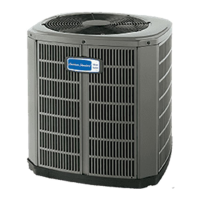
Do you have a question about the American Standard 4A7A3 and is the answer not in the manual?
| Brand | American Standard |
|---|---|
| Model | 4A7A3 |
| Category | Heat Pump |
| Language | English |
Crucial safety information for installation, operation, and servicing of the unit.
Specific guidelines for handling R-410A refrigerant and associated oils.
Details on unit size, weight, and mounting requirements for proper installation.
Guidelines for maximum total length and vertical change of refrigerant lines.
Recommendations for unit placement to ensure optimal performance and avoid issues.
Precautions for installing units in areas with snow and freezing temperatures.
Specific requirements for installing units near salt water environments.
Steps to inspect and prepare the unit before installation.
Guidelines for installing the support pad for the outdoor unit.
Table detailing line sizes and connection types for various models.
Information about the factory refrigerant charge and verification methods.
How to determine and record the required refrigerant line length and lift.
Critical instructions on insulating the vapor line and preventing contact.
Precautions when using existing refrigerant lines for retrofit applications.
Guidelines to prevent noise and ensure proper routing of refrigerant lines within the structure.
Step-by-step instructions for brazing refrigerant lines using dry nitrogen.
Procedure for leak checking refrigerant lines and coil using dry nitrogen and soapy solution.
Steps to evacuate the system to the required micron level.
Instructions for properly opening the gas service valve on the unit.
Cautionary steps for opening the liquid line service valve safely.
Table specifying maximum wire lengths for low voltage thermostat wiring.
Wiring diagrams for connecting the thermostat to air handler and outdoor unit.
Requirements for the high voltage power supply and compliance with codes.
Recommendation for installing a separate disconnect switch at the outdoor unit.
Procedure for grounding the outdoor unit according to codes.
Steps for safely powering up and starting the system after installation.
How to measure temperatures for system charging and select the correct method.
Detailed procedure for subcooling charge adjustment in cooling mode.
Charts for determining subcooling corrections based on line length and lift.
Table for determining liquid gauge pressure based on subcooling and temp.
Table for superheat charging of fixed orifice systems using temperature measurements.
Recommended charging method for temperatures below 55°F, focusing on weigh-in.
Final inspection and operational checks to ensure proper system performance.
How to use pressure curves to verify cooling performance based on temperature measurements.
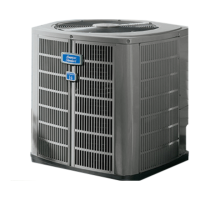
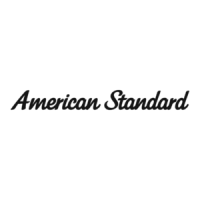


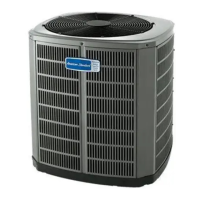
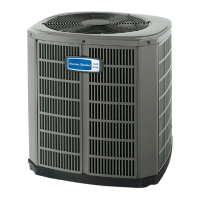
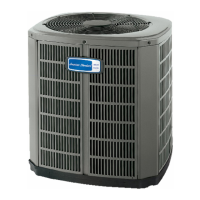

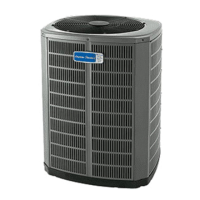
